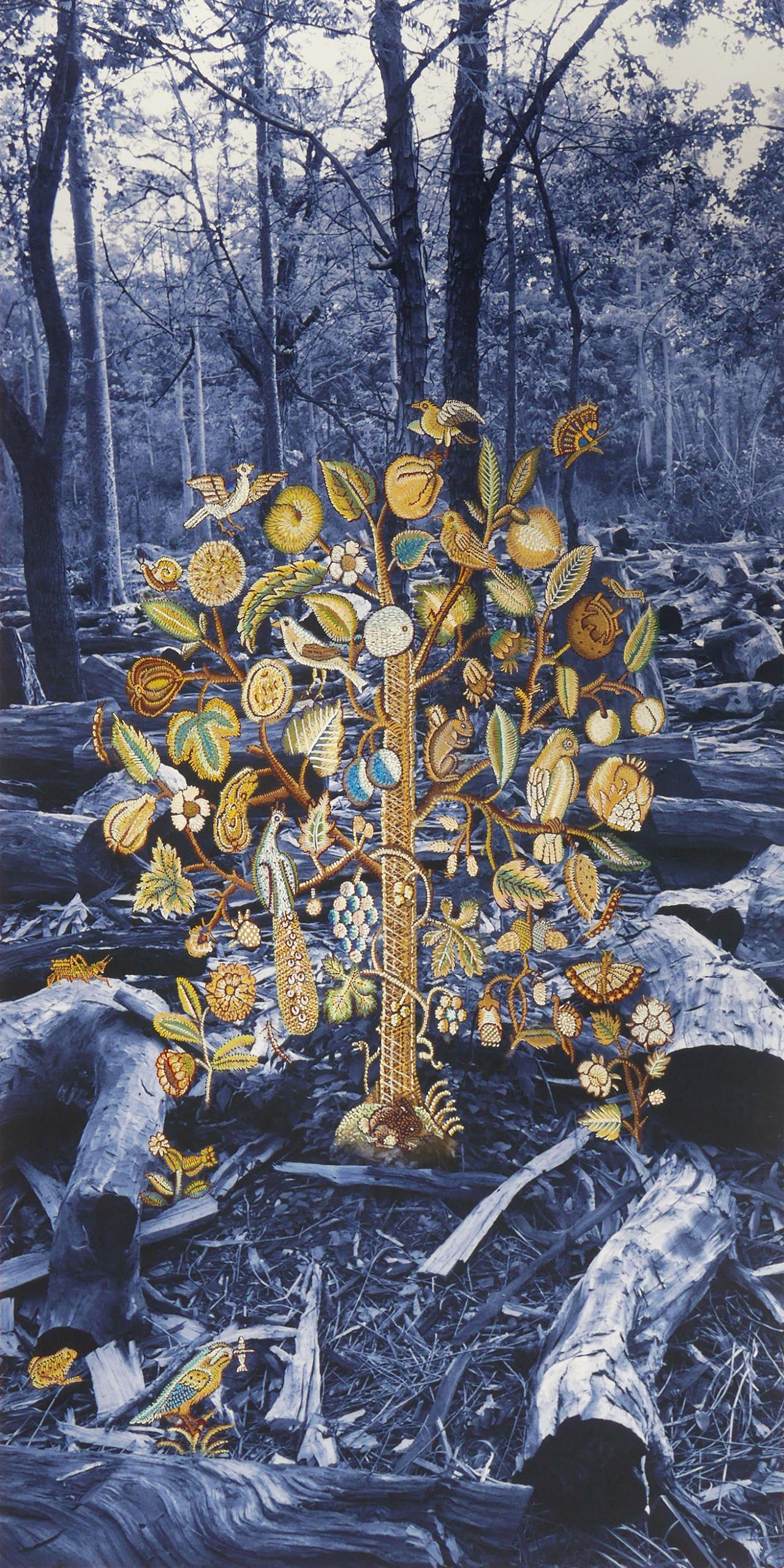“In its beauty and force, ‘nature’ is often regarded as benign and apolitical,” said Slavick. “We do not expect trees to assume editorial stances or embody ideologies. Whether bombed or irradiated, contained or marginalized, in underground union or standing in persistence, trees and their representations can offer solace and space — for the necessity of talking, listening and learning.”
The exhibition is free and open to the public Tuesday, Sept. 9 through Friday, Oct. 24, 2025 with a public opening reception on Tuesday, Sept. 9 from 12:30-1:30 pm. Staffed by students, Family Tree will be open most school days, during normal daytime hours.
For more information about the Pearl Conard Art Gallery, including up to date hours, visit http://u.osu.edu/pcagallery
If you have a disability or need special accommodations, email u@osu.edu or call 614-292-5000 for assistance.
About the artists
elin o’Hara slavick has exhibited internationally and is currently Artist-In-Residence at the University of California, Irvine. Her work is included in many collections, including the Queens Museum, The National Library of France, The Library of Congress, the Nasher Museum, and the Art Institute of Chicago. Author of two monographs, Bomb After Bomb: A Violent Cartography and After Hiroshima, her writings and images have been featured in The New York Times, Los Angeles Times, FOAM, San Francisco Chronicle, Asia-Pacific Journal, and Photo-Eye, among other publications. She is also a curator, critic, poet, and activist.
Since 2008, the artist has worked on After Hiroshima, Nagasaki and Fukushima, a series of cyanotypes, photographic contact prints of rubbings of A-bombed artifacts, photo-chemical drawings of atmospheric tests, essays, collages, and site-specific installations. The images of A-Bombed and irradiated trees—from trees that survived the atomic bombings of Hiroshima and Nagasaki to trees both barren and heavy with contaminated fruit in Fukushima—are photographs of witness and resistance. They invite people to acknowledge the dangers, survival and aftermath regarding nuclear energy and weapons, atomic bombs, radioactive waste, and nuclear accidents. They make the invisible visible, reminding us that we are all connected.
Madeleine Slavick is the author of several books of photography, poetry, and nonfiction, including Town, Fifty Stories, Fifty Images; delicate access; Something Beautiful Might Happen; and Round – Poems and Photographs of Asia. Her writing and images have been published internationally by Akhbar Al-Adab (Cairo); Art News, Art New Zealand, PhotoForum (Aotearoa New Zealand); Asia Literary Review, Cha: An Asian Literary Journal, Dislocation (Hong Kong); Guernica, Monday Artpost (Canada); Mascara Literary Review (Australia); Poeteka (Albania); Prairie Schooner, Tinfish, Vice-Versa (USA); Quarterly Literary Review Singapore, Softblow (Singapore), Postcolonial Studies (England), Pressed (Taiwan) and Writing Macao, among others, with translations into Albanian, Arabic, Chinese, and German. Currently residing in Aotearoa New Zealand, she identifies as a Hongkonger after living there for nearly 25 years.
Madeleine grew up in ‘The Pine Tree State’ of Maine. Behind the family home, an open field (since redeveloped) and across the street, a patch of woods (largely felled) – these were the playgrounds of her youth. Fast-forward several decades to her home in Aotearoa, with a timber factory at the beginning of the road, a dairy farm next door, and forest park at the end. Her works in this exhibition reveal dichotomies in our treatment and experience of nature, depicting the glory of the tree, yet its containment and marginalization.
Sarah Slavick is a professor at Lesley University’s College of Art and Design in Boston. Numerous awards include a grant in painting from the Massachusetts Cultural Council and artist residencies at Baer Art Center in Iceland, the Millay Colony, and the Bemis Center for Contemporary Art. Exhibition highlights include Big Bang! Abstract Painting for the 21st Century at the DeCordova Museum and Sculpture Park and Dix Artistes Americaines in Strasbourg, France. Her work has been featured in The Boston Globe, Hyperallergic, and journals of contemporary criticism, art, and literature such as Diacritics and Posit 9. Slavick engages with the larger regional community as a union leader, activist, artist, gallery director, curator, critic, juror, and teacher.
In producing oxygen, the trees above ground are critical for human survival. In the Elegy to the Underground series, she is particularly drawn to what happens below ground, especially the recent discoveries concerning latticed fungi or mycorrhizal networks.Through sharing resources and working together in complex and infinite pathways, alliances, and kinship networks, trees reach enormity, increasing their chances of survival and ours as well. These new insights into the hidden life of trees offer compelling strategies for protecting our own home and species. Fearing and mourning their heartbreaking loss, her watercolors and paintings constitute elegies, alternately acting as tributes and memorials to trees.
Susanne Slavick is an artist, curator, and University Professor Emerita at Carnegie Mellon University in Pittsburgh. She studied at Yale University, Jagiellonian University in Krakow, and Tyler School of Art in Rome and Philadelphia. Her traveling curatorial projects include When the Bough Breaks (2019-21); Marx@200 (2018); Unloaded (2015-19); and Out of Rubble (2011-15). Recent exhibits include those at University of Virginia, McDonough Museum of Art, Chicago Cultural Center, and the Godwin-Ternbach
Museum, Empty Circle, and Accola Griefen Gallery (all NYC). Honors include multiple grants from the National Endowment for the Arts and the Pennsylvania Council on the Arts, the 2019 College Art Association Distinguished Teaching of Art Award and Carnegie Mellon’s Henry Hornbostel Teaching Award. Book and journal publications include contributions to: Formations of Identity: Society, Politics, and Landscape; Cairo: Images of Transition; Journal of Visual Culture; Technology and Culture; Hyperallergic, and Cultural Politics.
Susanne’s work pursues empathic unsettlement, combining images of incomprehensible destruction and the possibility of recovery, however elusive. In the Tree of Life series, carpet designs from diverse cultures are painted over images of environmental devastation—from forest fires in Yellowstone National Park and New South Wales to logging in Nepal and Canada. Deforestation knows no borders. These ‘trees of life’ do not lie down. They stand up in persistence.

